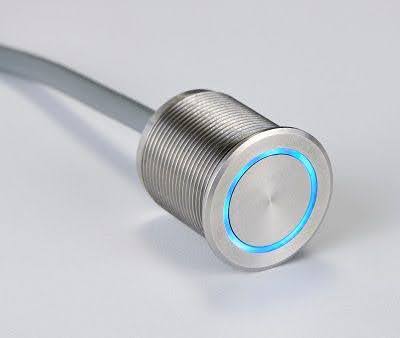Understanding the Science Behind Piezoelectric Switching

Touch a button, trigger a response—simple, right? But behind many of today’s sleek, durable interfaces is a quiet powerhouse of science: piezoelectric technology. It’s reshaping how we interact with machines, making buttons smarter, longer-lasting, and more adaptable to demanding environments.
While it may sound like something out of a physics lab, piezoelectric switching is increasingly found in everyday places—from industrial control panels to marine systems, medical devices, and public kiosks. And companies like Barantech’s HMI solutions are leading the way in making this science user-friendly and commercially scalable.
So, how does it all work—and why does it matter? Let’s dig into the science behind the switch.
What Is Piezoelectricity?
At its core, piezoelectricity is a property of certain materials—typically crystals or ceramics—that generate an electric charge when mechanically stressed. It also works in reverse: apply voltage, and the material deforms or vibrates.
This discovery, dating back to the 1880s, has since become a fundamental principle in modern engineering, with applications ranging from ultrasound machines to precision actuators and—yes—high-performance switches.
The Piezo Switch in Action
A piezoelectric switch works without moving parts. When a user presses on the surface, the slight pressure creates a deformation in the underlying piezo element. That deformation generates an electric signal, which is interpreted by a circuit as an “on” or “off” command.
It all happens in a fraction of a second, with no springs, no clicking, and no physical wear. That’s why Barantech’s HMI solutions based on piezo switching are often found in places where reliability, hygiene, and durability are paramount.
Why Piezo Over Mechanical?
Traditional mechanical switches rely on physical contact—often metal-on-metal—to complete a circuit. Over time, this contact wears down, leading to failures, inconsistent performance, and increased maintenance.
Piezo switches offer several clear advantages:
- No moving parts = nothing to wear out
- Sealed surfaces = waterproof, dustproof, and vandal-resistant
- Longevity = millions of actuations without loss of sensitivity
- Compact form factors = ideal for space-limited designs
- Silent operation = great for medical, office, or public use
This isn’t just an upgrade—it’s a whole new class of reliability.
Built to Survive the Real World
From food factories to outdoor installations, piezo switches thrive where mechanical buttons struggle. They can handle:
- Extreme temperatures
- High-pressure cleaning
- Saltwater spray
- Chemical exposure
- High-frequency use in public settings
And because they can be built into solid metal surfaces, they blend seamlessly into rugged environments without compromising aesthetics or function.
Clean by Design
Piezo switches are a natural fit for industries where hygiene is critical. The flat, sealed surfaces mean there’s nowhere for bacteria or grime to hide—making them ideal for:
- Medical equipment
- Commercial kitchens
- Lab instrumentation
- Pharmaceutical production lines
They’re also easy to sanitize without the risk of damaging sensitive components beneath.
Smarter Interfaces, Cleaner Inputs
Because piezo switches are digital at heart, they integrate easily into programmable logic systems, touch-sensitive HMIs, and intelligent control panels. They can be:
- Programmed for multiple functions (e.g., tap vs. hold)
- Integrated with LED indicators or backlighting
- Custom-designed with symbols, labels, and feedback tones
This makes them a natural choice for modern HMIs where intuitive design and intelligent control need to coexist.
The Science Is Solid—So Is the Future
As touch interfaces continue to evolve, piezoelectric switching offers a rare blend of elegance and engineering. It’s durable without being bulky. Responsive without being fragile. And versatile enough to support the next generation of smart, connected machinery.
So next time you press a button that feels a little too smooth, a little too smart, and never seems to wear out—it might just be powered by piezo.





